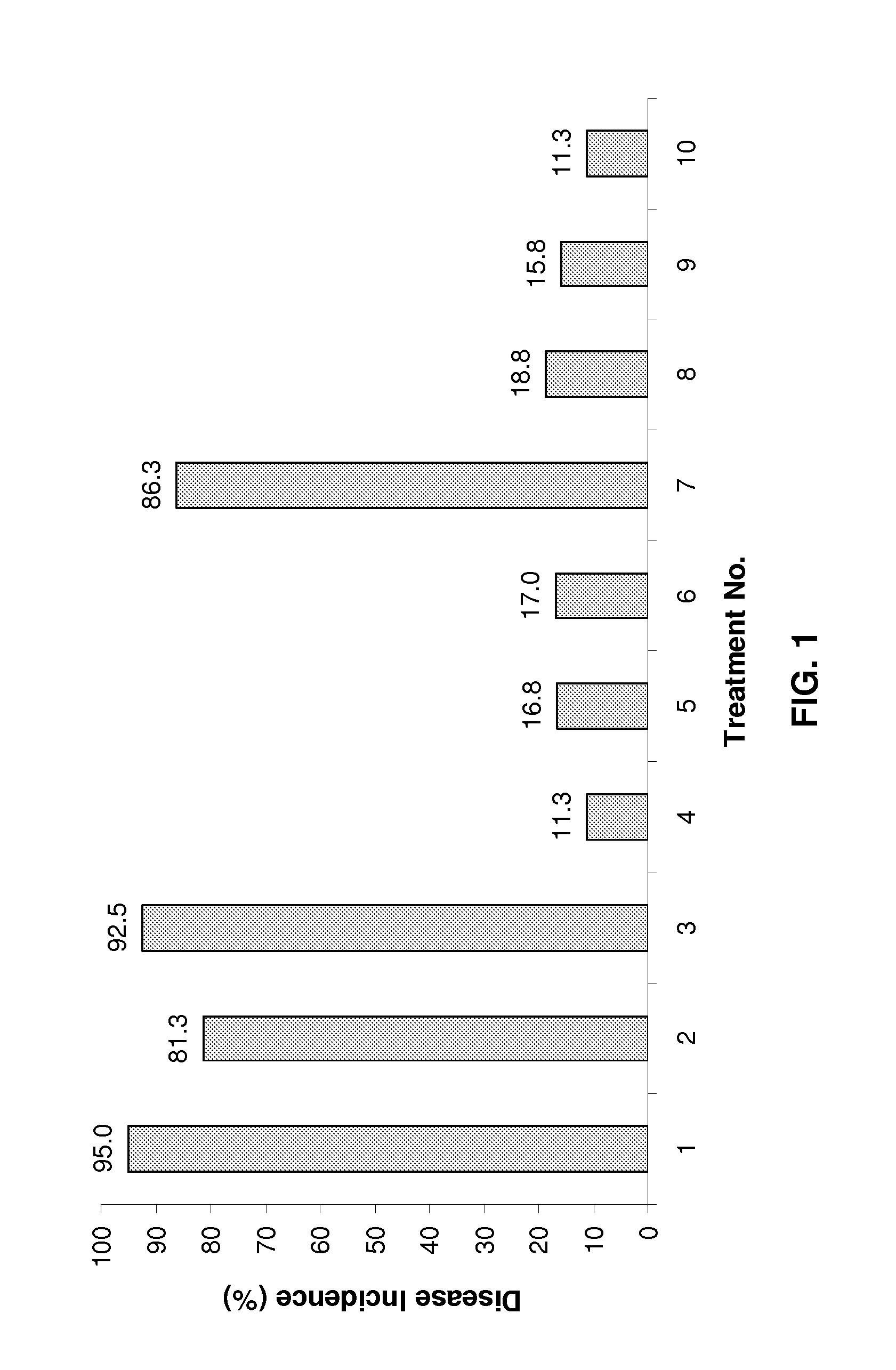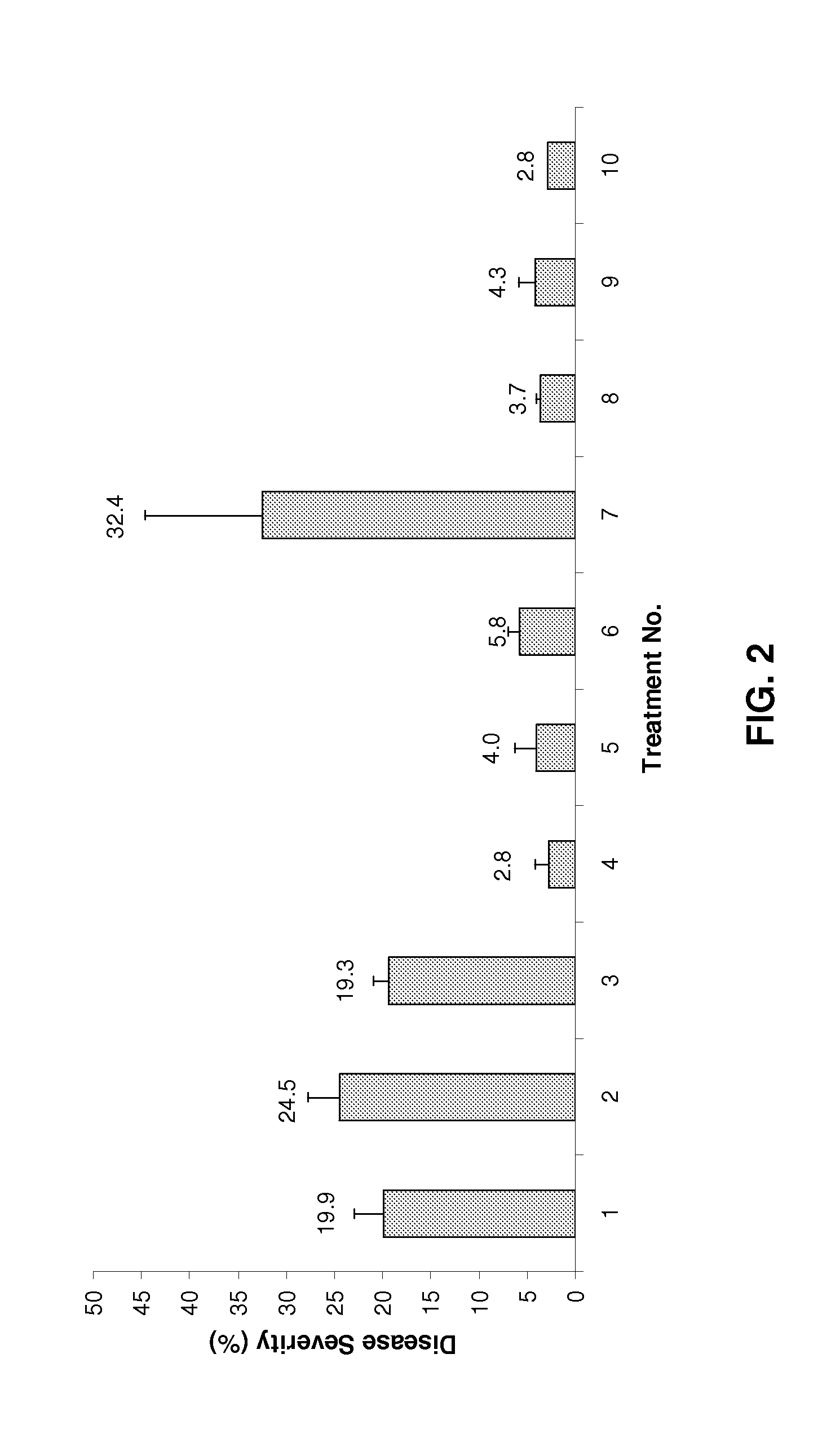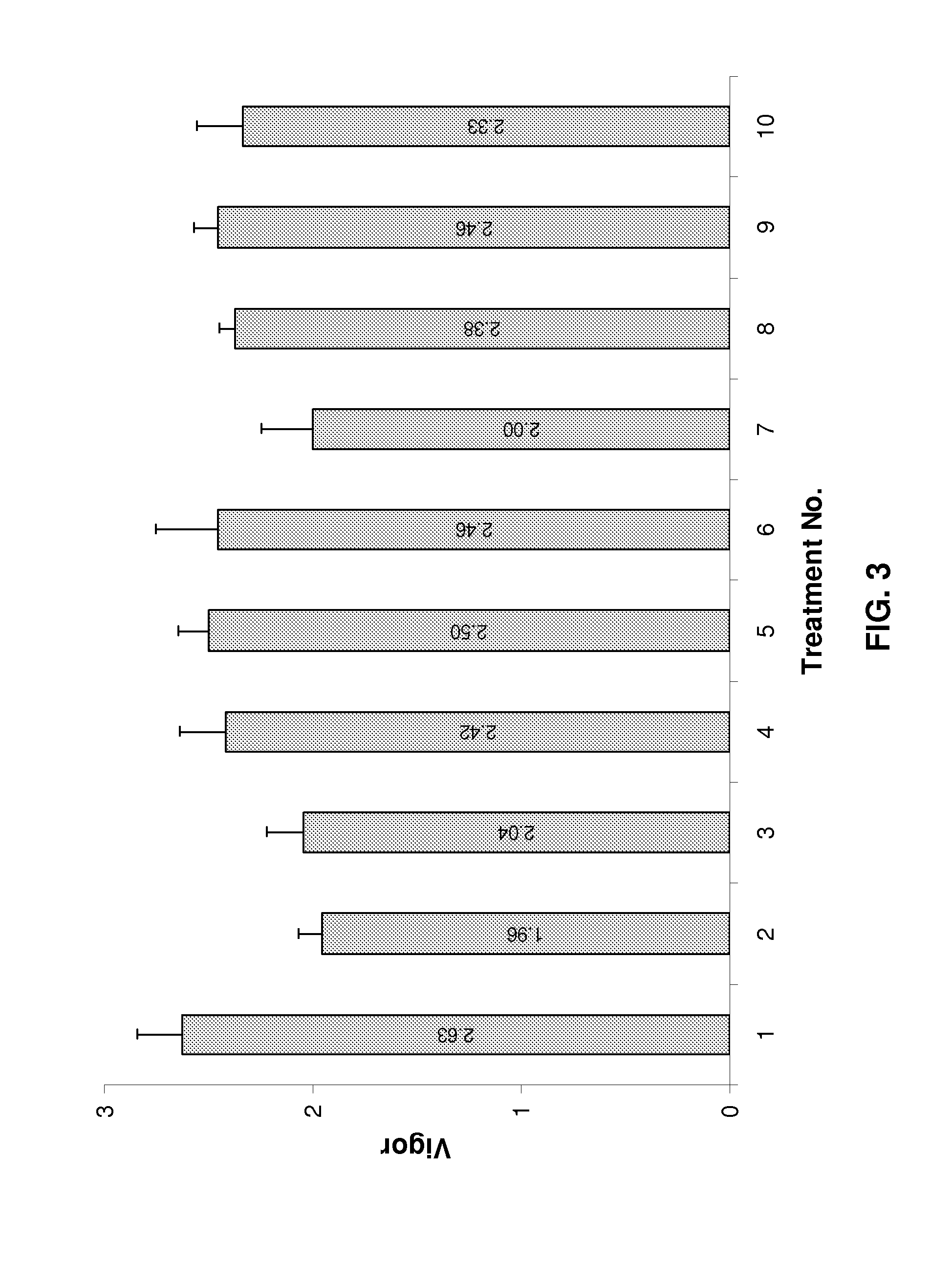Fungicidal compositions and methods
a technology of compositions and fungi, applied in the field of fungicidal compositions and methods, can solve the problems of limited sds management options, slow progress, and limited effects of fungicides applied in furrows during planting or seed treatment, and achieve the effect of reducing the occurrence of phytopathogenic fungi
- Summary
- Abstract
- Description
- Claims
- Application Information
AI Technical Summary
Benefits of technology
Problems solved by technology
Method used
Image
Examples
example 1
[0127]Soybean seeds (Glycine max (L.) Merr., an indeterminate line) were treated with Trilex® 2000 (7.12% (w / v) trifloxystrobin, 5.69% (w / v) metalaxyl), Gaucho® 600 FS (48.7% (w / v) imidacloprid), Votivo® 240 FS (21.5% (w / v) Bacillus firmus strain 1-1582), and fluopyram (41.5% (w / v)) in the amounts and combinations shown in TABLE 1.
TABLE 1TreatmentActiveNo.Compound(s)Amount(s)1——2Trilex ® 20008.66 ga / 100 KgGaucho ® 600 FS62.5 ga / 100 Kg3Votivo ® 240 FS 0.1 mga / seed4Fluopyram0.17 mga / seed5Fluopyram0.34 mga / seed6Fluopyram0.67 mga / seed7Trilex ® 20008.66 ga / 100 KgGaucho ® 600 FS62.5 ga / 100 KgVotivo ® 240 FS 0.1 mga / seed8Trilex ® 20008.66 ga / 100 KgGaucho ® 600 FS62.5 ga / 100 KgVotivo ® 240 FS 0.1 mga / seedFluopyram0.17 mga / seed9Trilex ® 20008.66 ga / 100 KgGaucho ® 600 FS62.5 ga / 100 KgVotivo ® 240 FS 0.1 mga / seedFluopyram0.34 mga / seed10Trilex ® 20008.66 ga / 100 KgGaucho ® 600 FS62.5 ga / 100 KgVotivo ® 240 FS 0.1 mga / seedFluopyram0.67 mga / seedFS = flowable concentrate for seed treatmentga / 100 Kg ...
PUM
 Login to View More
Login to View More Abstract
Description
Claims
Application Information
 Login to View More
Login to View More - R&D
- Intellectual Property
- Life Sciences
- Materials
- Tech Scout
- Unparalleled Data Quality
- Higher Quality Content
- 60% Fewer Hallucinations
Browse by: Latest US Patents, China's latest patents, Technical Efficacy Thesaurus, Application Domain, Technology Topic, Popular Technical Reports.
© 2025 PatSnap. All rights reserved.Legal|Privacy policy|Modern Slavery Act Transparency Statement|Sitemap|About US| Contact US: help@patsnap.com



